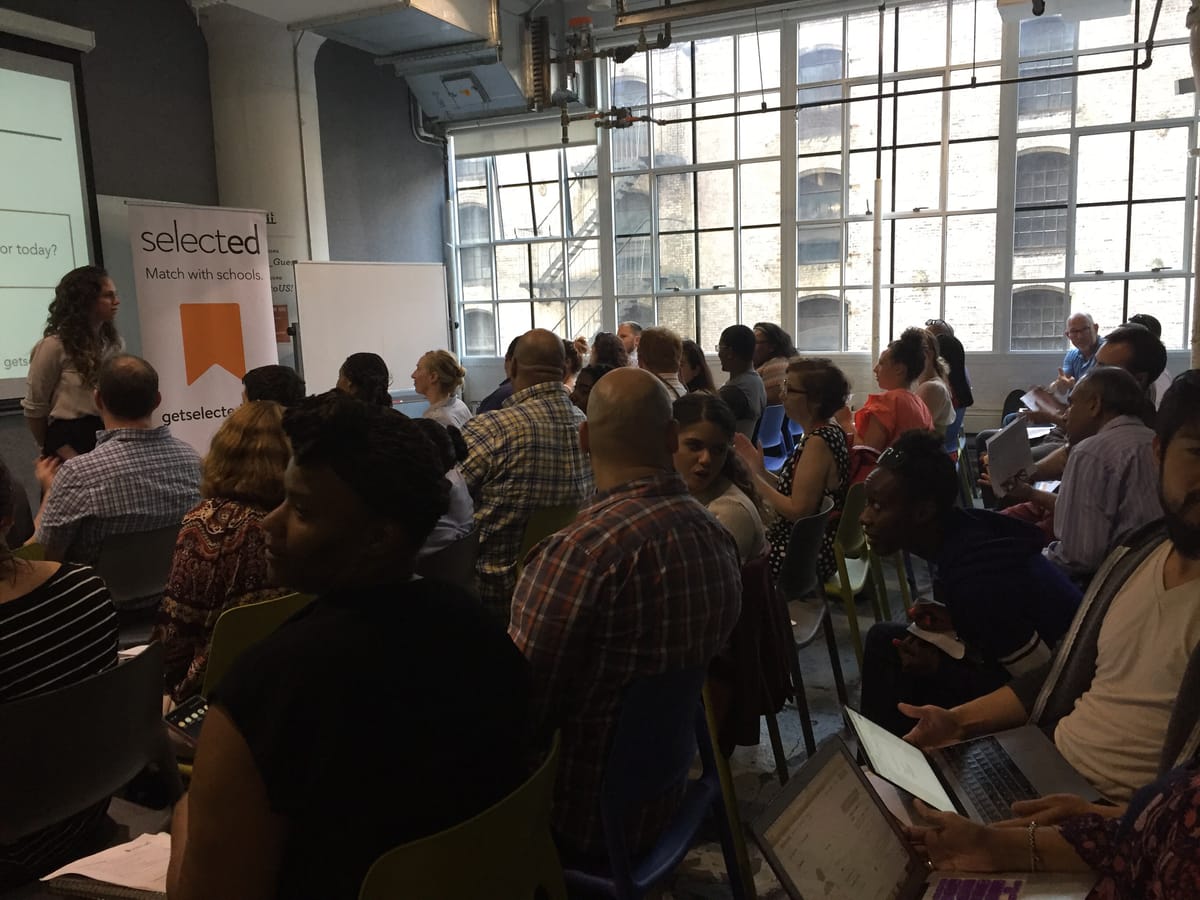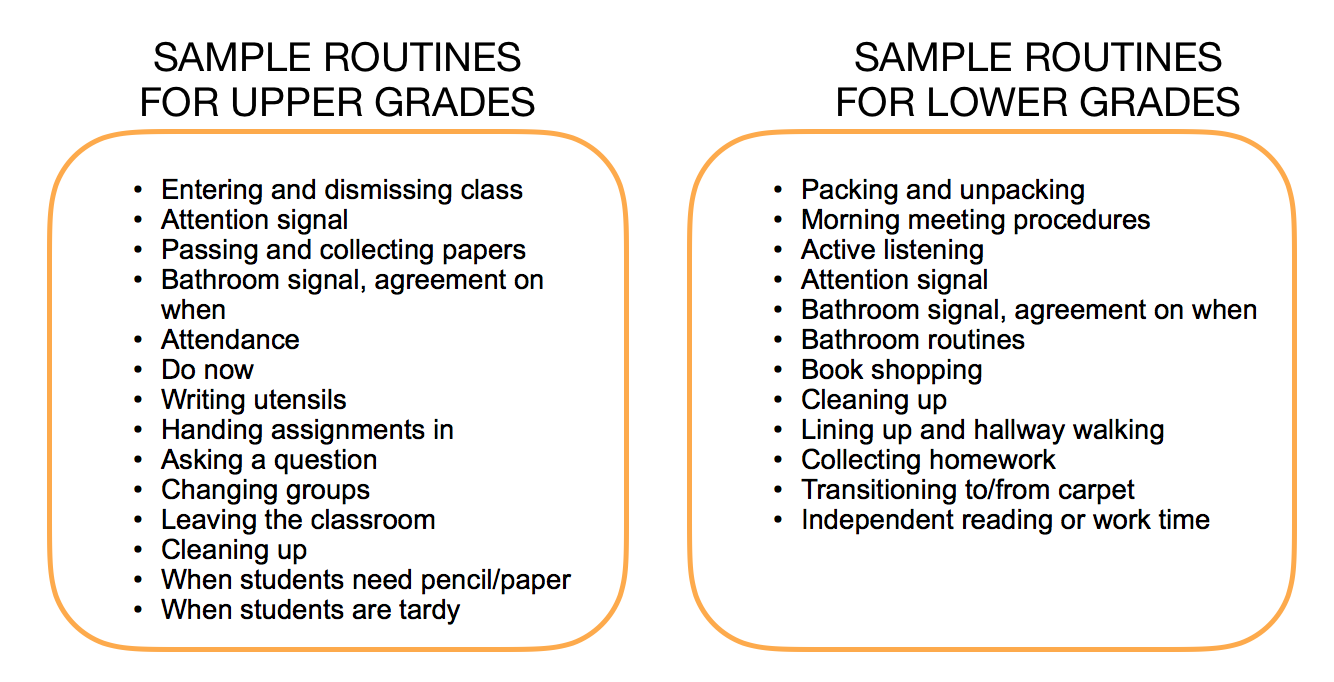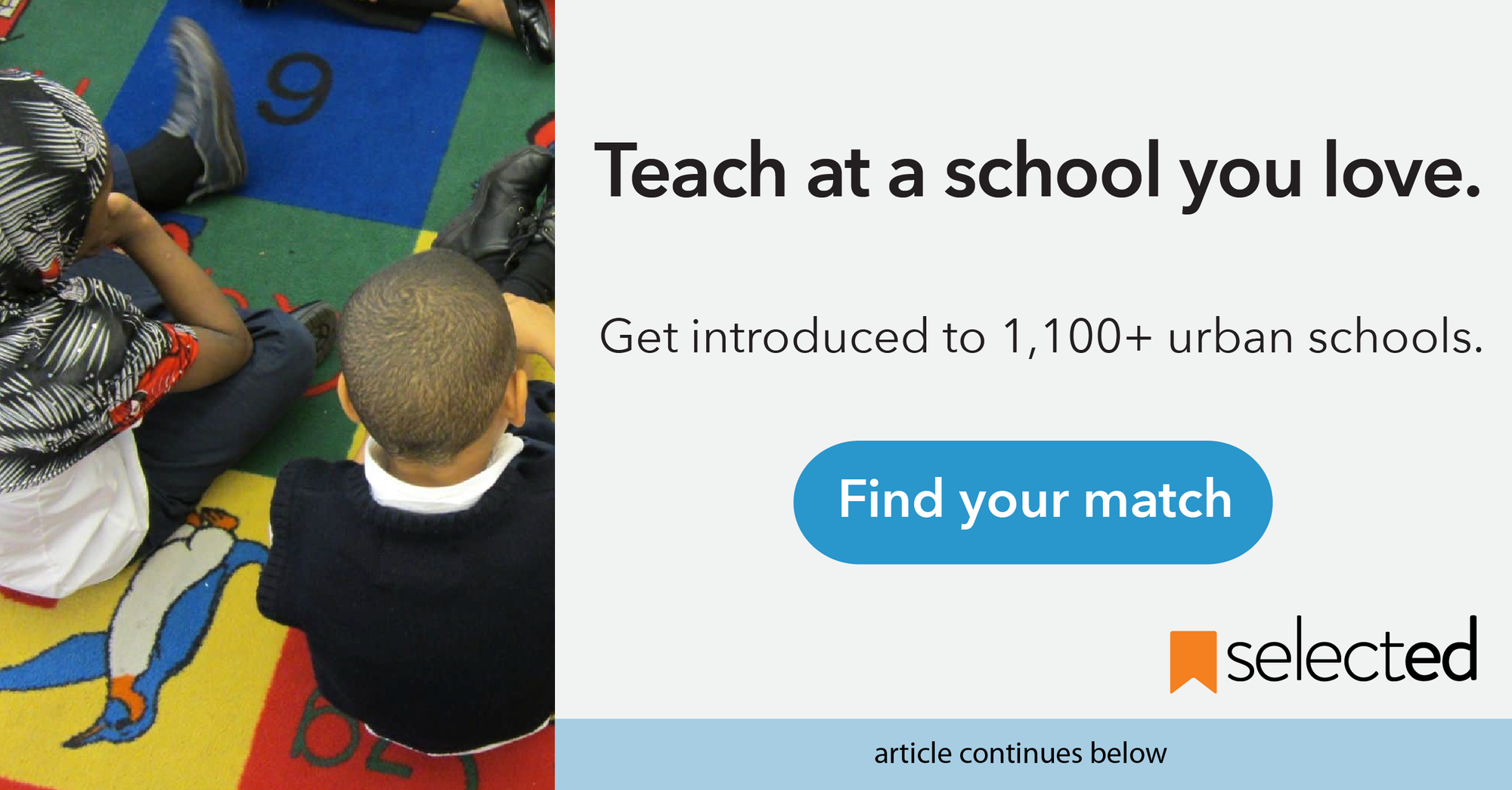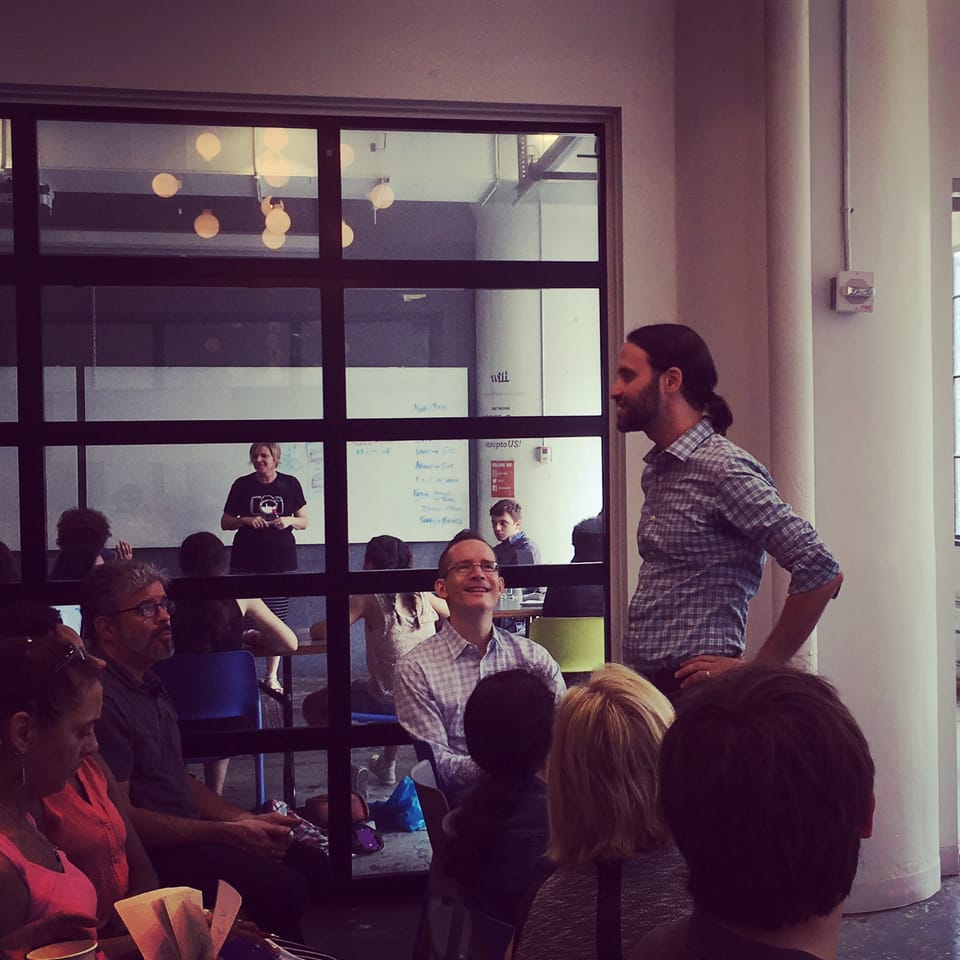4 Easy Steps to Implement Student Routines within the First Month of School
One of the single most important actions you can take as a teacher at the start of the school year is to plan and execute efficient routines and procedures. Here are the steps to make sure your first four weeks of teaching go smoothly.

Presentation and handouts:
- Your First Four Weeks of Teaching
- Your First Four Weeks of Teaching - Creating Rules
- Your First Four Weeks of Teaching - Planning Routines
- First Day of Teaching Checklist
Teaching...routines and procedures
Let’s face it — nobody dreams of becoming a teacher so they can teach routines. Nobody wakes up on the first day of school, rubs their hands together, and thinks, “I can’t wait to show my students how to unpack efficiently!” And no teacher gets a rush of excitement from presenting a four-step routine on how to hand in homework.
But I assure you, one of the most important actions you can take as a teacher at the start of the school year is to plan and execute efficient routines and procedures.
Just because you can bake a chocolate chip cookie does not mean that you can run a successful bakery. In this metaphor, teaching is “baking” and classroom management is “running a bakery.” Let’s talk about that bakery.
In life, there are procedures for everything. When you wash dishes, for example, you run the water, put soap on the sponge, squeeze it a few times to get it bubbly, then wash the front and back of the dish in a circular (or up and down) motion, then rinse both sides and place the dish in the drying rack. We don’t think about the complexity of this task because we are mature adults (hopefully) who have performed the task many times and have habituated the procedure. Remember, at one point, we did not know how to wash dishes and were taught how. Having practiced this so many times we have internalized the routine without having to think about it.
Now imagine your students internalizing school routines in the same manner. Take entering the classroom, for example. Imagine that they enter, take out a writing utensil, and begin working silently every single day. No questions, no issues — 100% compliance. You take attendance, then walk around the room supporting the students and collecting data. Students are focused and motivated. This can be your classroom. If you follow the steps below, your routines will be thoughtful, efficient, and free up your time to, well, teach.
Step 1: Plan
Below are common routines carried out on a daily basis in your typical lower and upper grade classrooms. You may or may not have already considered them, but there are procedures for all of these and more:

First, decide which routine you are going to plan. Your best bet is to start with a routine that you need right away, such as active listening (how students show they are listening), or responding to attention signals (this is a safety issue and should be taught immediately).
Once you have done this, decide what you expect from students during the routine. This is simply for your own planning purposes, not to be presented to students. Make two columns: “yes” and “no.” Under “yes,” write what you want students to do with their bodies, voices, and materials. For “no,” write — you guessed it — what you do not want them to do. Is it ok if they have their heads down? If they are fidgeting? What about cell phones? Decide now.
Finally, write out the steps as you will explain them to students. Use simple, direct language and limit to 3-5 directions. For lower grades, use charts for all routines. They should also contain images that support the content. For upper grades, use charts for more complicated, unusual, or infrequent routines.
Step 2: Present to Students
Now that you have finished planning, it’s time to teach your students. It’s not just what you say, it’s how you say it. So before you begin, make sure that you have the students’ undivided attention. What you are about to say is important and your body language needs to convey this. Stand still. Straighten up. If you must use your hands, use precise gestures only. After you read each step, pause to let the info sink in. Practice at home first if you need to. This is not easy for most teachers.
Step 3: Have Students Model
Depending on the age of the students and how complicated the routines are, have a single student, or group of students, model the specific routine first while the rest observe. For upper grades and less complicated routines, such as getting started on work or getting a teacher’s attention, it may suffice to have the entire class model.
Afterwards, assess mastery. In a more teacher-centered classroom, you decide whether the class achieved the desired result (100%). For a more student-centered approach, you can direct the question back to students, “What did you notice?” Or, more to the point — “How did we do?”
Step 4: Monitor and Provide Feedback
If you aren’t getting 100%, practice until you do. Sound boring or silly? It’s not, and here’s why: if you aren’t getting compliance now, when your entire focus is on student routines, there is zero percent chance that you will get compliance when you are teaching and your focus is on student learning.
In lower grades, have students do it again no matter what. They need the repetition. For older students, do it again if you or the students decide that they need additional practice. Just make sure that you remain positive during this time rather than accusatory or frustrated. Channel a great athletic coach.
Noncompliance or misbehavior should be noticed and addressed, but with as much anonymity as possible, and positive narration should be used before any individual correction. Remember, you are trying to build a strong community. Imagine if your principal reprimanded you in front of the entire staff during Professional Development on the first day of school. Even if you were in fact guilty of the given offense, what kind of relationship are you going to have with the principal that year? I’m guessing not a good one.
October and Beyond
- Post charts of routines and procedures. When students miss a step, you can whisper to them or point to the chart subtly.
- Don’t be afraid to re-teach routines when they start to unravel. We all need reminders. But keep it positive and remember your favorite coach.
Good luck! Remember, you are front loading the work now so you can teach your heart out later. It will be worth it in the end — I promise!
RSVP for our FREE Webinars on the 'First 30 Days'
- Monday, August 26th, 5pm EST / 2pm PST
- Wednesday, September 4th, 7pm EST / 4pm PST
- Join us live to discuss:
* Components of a successful first 30 days
* Efficient routines and systems for your class that will create a safe, structured, and loving learning environment
* How to execute and teach these routines, maximizing learning time and eliminating behavioral problems, while building a strong, positive learning community - Featured speaker: Liz Willingham is a former teacher, instructional coach, and recruiter with more than 10 years experience in NYC schools.
About Selected
Selected helps teachers find jobs at schools they love. We offer a free school matching and career support platform for teachers that connects them with 1,200+ PK-12 public and independent schools in urban metro areas in the Northeast and West Coast, including New York City, NJ, CT, Philadelphia, Washington DC, Boston, and Los Angeles. Create a FREE profile and start speaking with hiring schools immediately!





